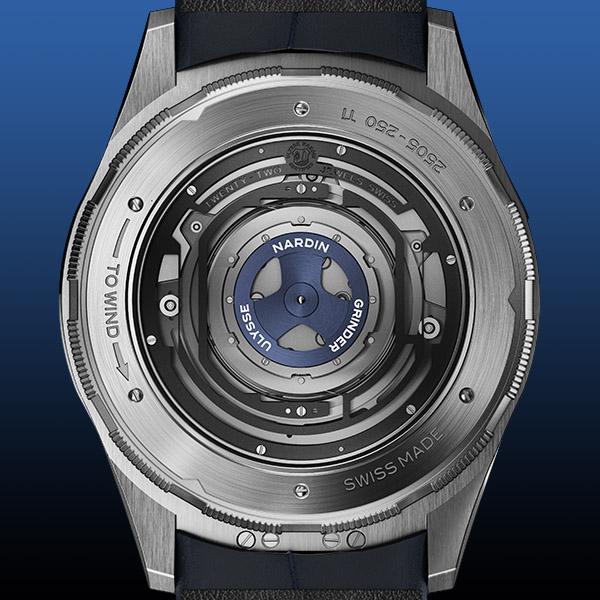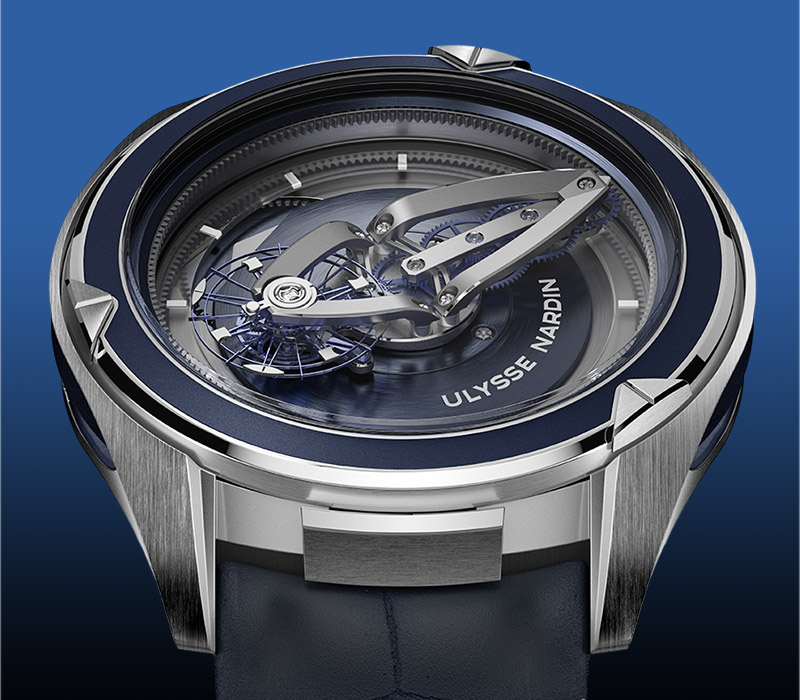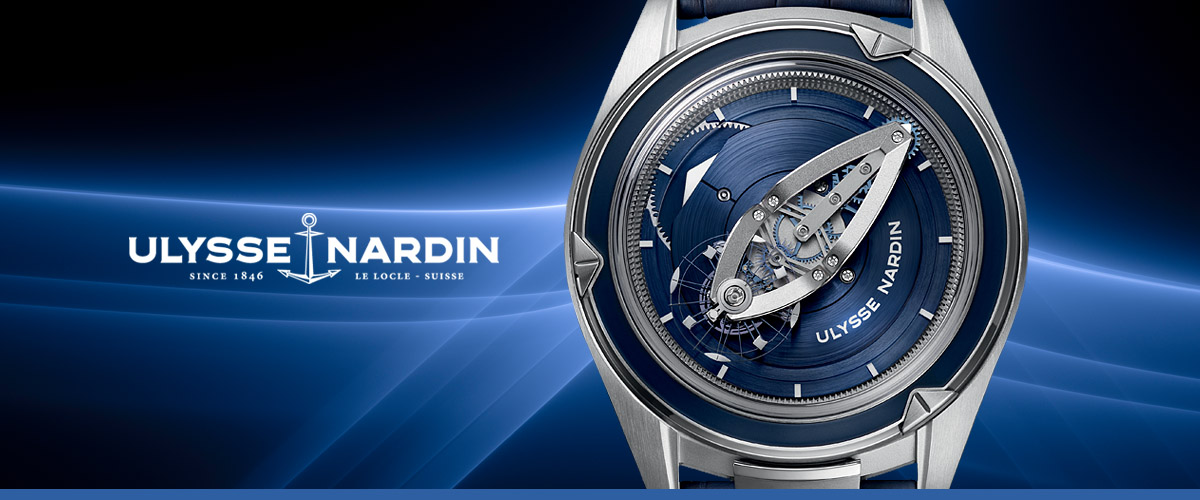
Ulysse Nardin
A New Concept of Time
Ulysse Nardin’s watchmaking formula is simple: Start with an impossible idea. Research it until it’s merely improbable. Persist until it’s inevitable.
A relentless spirit of discovery has served Ulysse Nardin well for more than 170 years, beginning with its marine chronometers in the late 1800s, and through the Trilogy of Time, launched in the 1980s. More recently, Ulysse Nardin sent shock waves through the watch industry when the company began integrating silicon into its mechanical movements, starting with the original Freak in 2001. While its full potential as a watchmaking material is still unknown, the number of brands following Ulysse Nardin’s lead continues to grow steadily.
Even so, they’ll have a hard time keeping pace because Ulysse Nardin shows no signs of slowing down. A prime example is the Freak Vision unveiled earlier this year. Since the brand introduced the original Freak, the collection has always been a showcase for Ulysse Nardin’s latest breakthroughs, and this new version is no exception.
HOROLOGICAL HARBINGER
Last year, Ulysse Nardin presented the InnoVision 2, a concept watch based on the Freak design. Loaded with patent-pending features, it foreshadowed some of the technology found in the new Freak Vision.
One innovation in particular — the Grinder System — is a game changer. This original design allowed the brand to create the first Freak powered by an automatic movement. But it’s more than that: the Grinder System also represents a significant upgrade to the oscillating rotor system that was introduced almost 100 years ago.
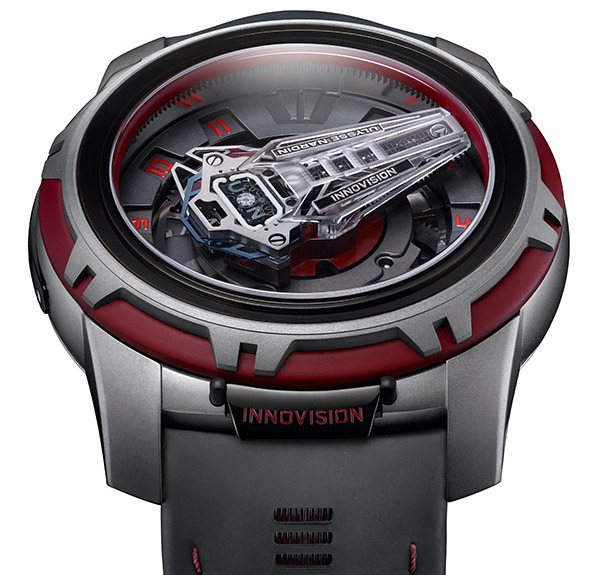
The InnoVision2 concept watch was introduced last year to showcase new technologies Ulysse Nardin is researching.
Instead of using a standard winding rotor like other self-winding movements, Ulysse Nardin’s engineers took a different approach. The UN-205 movement in the Freak Vision has a rotor, but it is connected to a complex system of springs and ratchets designed to double the torque generated when the rotor spins. According to Ulysse Nardin, it is like having four pedals on a bike instead of two, which means the watch winds faster with less motion by the person wearing it.
The new Grinder System winds the watch movement more efficiently than the oscillating winding rotor that was introduced almost 100 years ago.
A STEADY RATE OF INNOVATION
To further enhance performance, the company equipped caliber UN-205 with the Ulysse Nardin Anchor Escapement, a feature first unveiled three years ago. The design prevents rate fluctuations that occur when the energy stored in the mainspring begins to run out. As you may have noticed, a watch speeds up when the mainspring winds down. That is because the energy needed to swing the balance wheel is insufficient, shortening the distance the balance turns, which means that the seconds tick by faster.
Unlike the traditional Swiss lever escapement found in most mechanical watches, the pallet fork in the Ulysse Nardin Anchor Escapement is positioned between two blade springs. When the energy supplied by the mainspring is no longer sufficient to push past those blade springs, the watch stops running to avoid inconsistent performance. This highly advanced design ensures the watch delivers optimal chronometric precision for the entirety of its 50-hour power reserve.
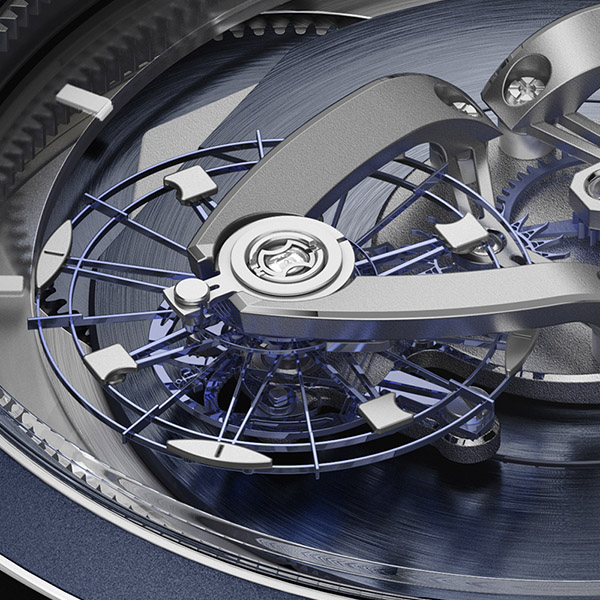
The Freak Vision’s silicon balance wheel was designed to reduce air friction and enhance stability.
Ulysse Nardin pushed its escapement technology even further by modifying it with an extremely light balance wheel similar to the one created for the InnoVision 2. The wheel is produced in a laboratory using Deep Reactive Ion Etching (DRIE), a photolithography process that allows the company to produce highly complex, three-dimensional shapes from silicon. The wheel is made up of micro blades that are aerodynamically shaped to reduce air friction and ensure stability. The wheel also features solid nickel elements on the outer edge to provide the necessary inertia. Those metal elements are welded to the silicon, a process that Ulysse Nardin has patented. The outcome is a balance wheel with low mass and high inertia characteristics.
FRESH FACED FREAK
In the Freak Vision, these fascinating technical advancements represent only half the story. The other important change was made to the watch’s aesthetics.
For starters, the case has been redesigned for a more open appearance. Much of the credit for this goes to the new box-domed sapphire crystal. Its shape makes it possible for both the case and the bezel to be thinner than those found on previous Freaks. The Freak Vision’s 45mm platinum case is fitted with a titanium bezel that features blue-rubber elements. This makes it easier to turn, which is important because rotating the bezel is how you set the time for this watch.
What hasn’t changed, however, is the unique way that the Freak indicates the time. The baguette movement — which is essentially a tourbillon — turns on its own axis once an hour and serves as the minute hand. Below its boat-hull-shaped upper bridge, a silver triangle slowly advances to mark the hours. Even though this novel configuration was unveiled nearly 20 years ago, it still feels fresh today. That is probably because there’s nothing else even remotely like it.
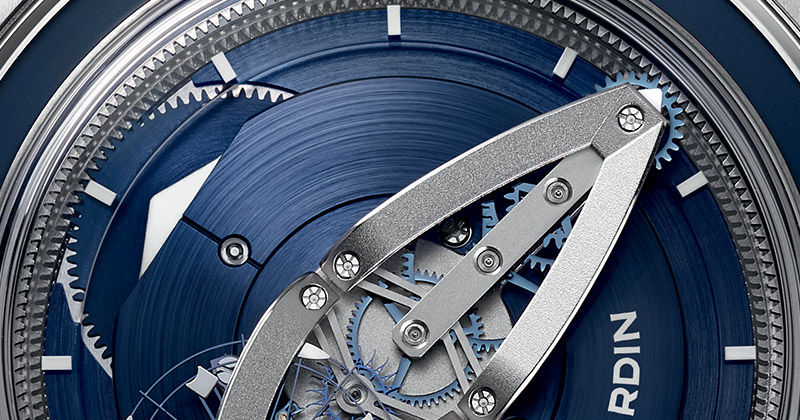
The large triangle on the left advances to indicate the hours, while the shaped-bridge on the right rotates to show the minutes.
With the Freak Vision, Ulysse Nardin gives free reign to its irrepressible urge to chase the impossible. That passion for challenging conventions is what has kept the brand at the forefront of mechanical watchmaking for almost two centuries.
Click here to view the Ulysse Nardin collection online at Cellini Jewelers.

